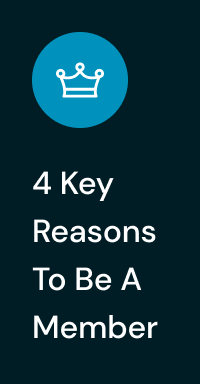
By Rachel Waterhouse, CEO
Artificial intelligence is no longer science fiction. It is already influencing how Australians live, work and invest.
For retail investors, AI tools offer the potential to streamline research, uncover insights and interpret data more efficiently. At the Australian Shareholders’ Association (ASA), we are seeing growing interest from members who are trialling these tools to better understand companies, strategies and governance.
But while interest is growing, so is caution. AI is not a shortcut to investment success. The real question is how to use it wisely.
Member experiences
ASA members are testing tools like ChatGPT and Microsoft Copilot. Some use them to summarise ASX announcements, scan financial statements or draft AGM questions. Others are comparing financial ratios, exploring board structures or checking fund holdings.
One member uses Copilot to assess board composition, including director qualifications, gender mix and tenure. They have also built a financial filter covering profit and loss, balance sheet and borrowings. “It is not perfect,” they said, “but it saves time – and I always double-check.”
Another member described their approach as exploratory: “I am just asking questions to see what I get back. Sometimes it surfaces things I had not noticed.”
Some are also using AI to explore broader themes, like industry trends or the strategies of leading companies.
Tip: Use AI to support your process, not replace it. Always verify outputs against official filings and trusted sources.
Understand the limitations
AI can assist with investment research, but it is not always reliable. One well-known issue is hallucination, where the tool generates plausible but incorrect information. For example, a request to summarise a 2024 annual report might pull data from an earlier year.
Members also noted issues such as vague answers, inconsistent formatting and misinterpreted questions. One described AI as “an enthusiastic but inexperienced intern” who is often helpful but not reliable without oversight.
Another said they rely on free tools for now, due to the time needed to evaluate others. Several members emphasised the importance of prompt quality. “It is plain-English programming,” one said. “The more specific you are, the better the result.”
Most agreed that AI works best when used as a research assistant – not as an adviser.
Tip: Treat every AI output as a draft. Cross-check with ASX announcements, annual reports or third-party data before relying on it.
Prioritise privacy and security
When engaging with AI platforms, it’s important to ensure they adhere to robust privacy and security standards.
Tip: Prioritise privacy and security. Before using any AI platform, review its privacy policy to understand how your data will be collected, used and protected. Limit the personal or sensitive information you share and only provide what is necessary.
Getting the prompt right
One member shared a useful framework for writing prompts, based on four elements: Role, Context, Command, and Format. For example: “Act as a financial analyst (Role), reviewing the 2024 annual report of Company X (Context), summarise the key governance risks (Command), in bullet point format (Format).”
This type of structure improves accuracy and reduces irrelevant responses. Other members noted that asking the same question in a different way often yields new or better results.
Tip: Be specific. Define the role, give context, ask a clear question and request the format you need.
Getting started
For members new to AI, the advice is simple: start small. Suggested first steps include:
- Defining a financial term or governance concept
- Summarising a short ASX announcement
- Reviewing the fee structure of a listed fund
- Testing different ways to ask a question
- Checking visible sources for credibility
- Cross-referencing AI outputs with official data
- Applying the same scepticism you would to unsolicited tips
“Just try it,” one member said. “Do not be afraid to ask questions. The more you use it, the more confident you will get.”
Another noted that ASA’s recent webinar on AI, led by a government-appointed expert, helped them better understand both risks and benefits. A different member warned that AI can sometimes lead down rabbit holes if used without care.
Tip: Think of AI as a guide, not a final answer. Use it to enhance your knowledge, not to replace your judgment.
How ASA is using AI
ASA is running a small trial with volunteer company monitors to explore how AI could support their work over time. The focus is on comparing company practices and performance against ASA’s voting and engagement guidelines. AI is being tested alongside a structured spreadsheet of governance and performance data to explore potential links between voting intentions and outcomes. While still in development, this approach aims to streamline analysis and highlight areas for deeper review.
In advocacy, AI assists with summarising regulatory documents, tracking public commentary and organising member feedback. This supports faster responses and more targeted submissions to government and regulators.
In education, AI is helping us draft learning materials, simplify complex topics and identify areas of interest to members. This enables us to deliver timely content while freeing up staff and volunteer capacity.
We are also starting to explore how AI can help analyse member engagement trends to inform strategies for attracting and retaining members.
All AI-generated outputs are reviewed by ASA staff or experienced contributors before use.
These early steps reflect ASA’s commitment to using practical tools that strengthen governance, support members and grow the investor community.
Final thought
AI can make investing more efficient, but it cannot replace experience or judgment. As one member said, it is like a curious colleague: helpful for gathering information but not for making final decisions.
ASA will continue to support members as they explore new tools, while remaining committed to transparency, accountability and strong governance.
AI may help unlock insights. But it is people, not algorithms, who make the decisions that build long-term wealth.
General disclaimer: This information is for general informational purposes only and does not constitute financial advice or a recommendation.






